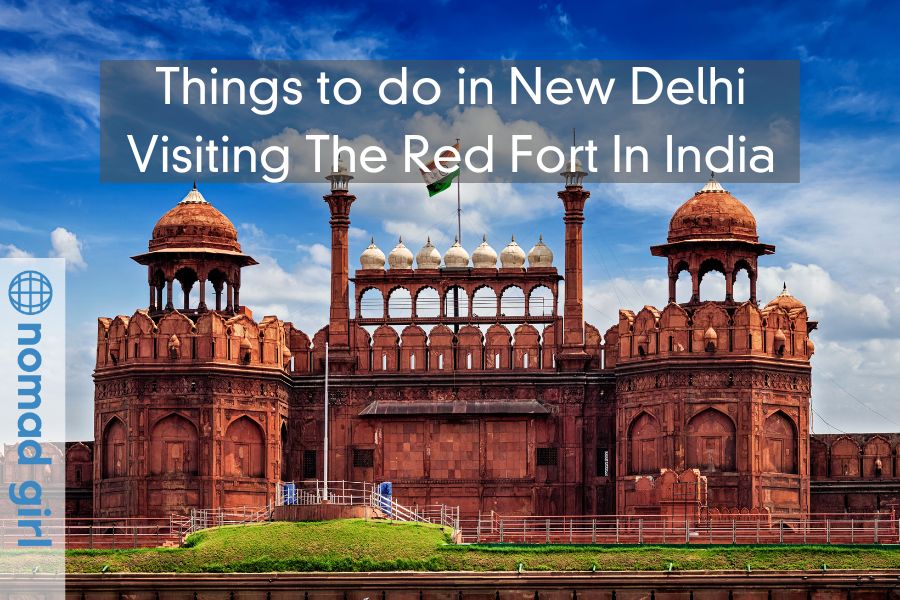The Red Fort, also called Lal Qila, is a UNESCO World Heritage Site located in the bustling Chandni Chowk area of Delhi, India. This historically significant complex was once known as the blessed fort and is surrounded by 2-kilometre-long red sandstone walls. The area is vibrant with spice markets, sidewalk food vendors, and bustling cars and rickshaws.
Inside the Red Fort, visitors can explore a number of impressive structures, including the Diwan-i-Am or Hall of Public Audience where the Mughal emperors used to hold court. Another highlight is the Diwan-i-Khas or Hall of Private Audience where the emperor would meet with important guests. The fort also features beautiful gardens and fountains, as well as museums showcasing artefacts from India’s rich history.
One of the best times to visit the Red Fort is during India’s Independence Day celebrations on August 15th when the Prime Minister delivers a speech from its ramparts. However, be prepared for large crowds and heavy security.
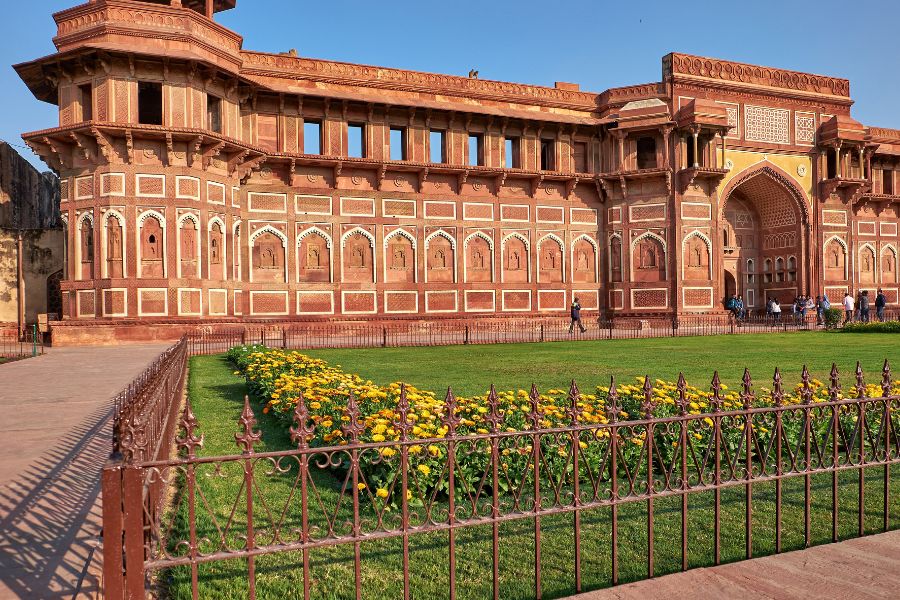
What is the Red Fort?
The Red Fort in Delhi served as the residence for the Mughal emperors for nearly two centuries. It is the most expansive complex of its kind in the city. However, during the British conflicts of 1858, the Red Fort suffered significant damage. Several parts of the complex were destroyed, including gardens and buildings, while over 60% of the main structures were damaged or destroyed. Additionally, many of the furnishings were stolen.
In 2003, the Fort and its surrounding grounds were entrusted to the Archaeological Survey of India for restoration and maintenance. At present, the buildings and gardens in the area are still in excellent condition, thanks to ongoing care and maintenance efforts.
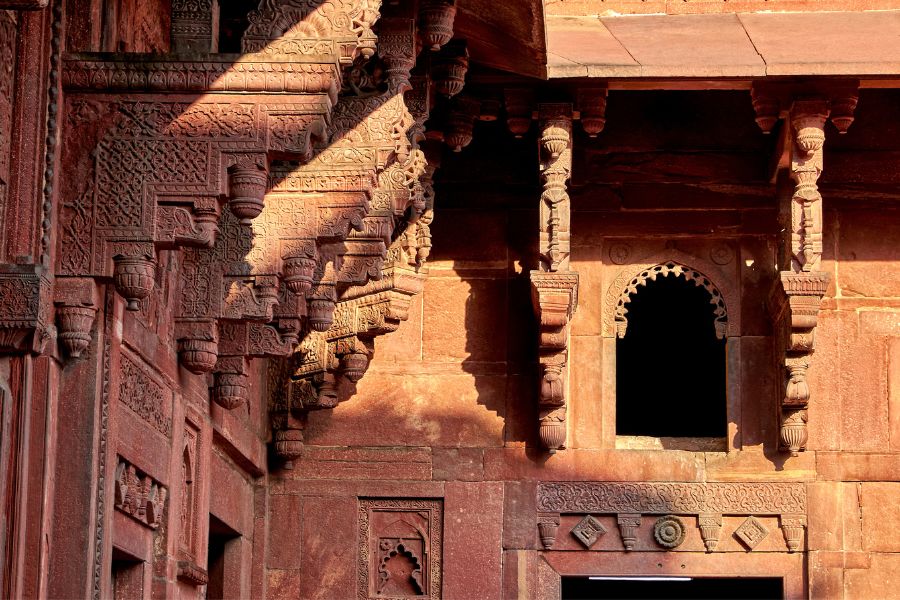
Security
As you enter the Red Fort through its gates, you might feel slightly uneasy upon encountering the security guards. These guards wear army-type clothes and stand behind a stone wall, holding large rifle-type guns that point directly at the ticket-checking area. However, there is only one entrance for ticket checking, so it is unavoidable to walk past them. It is important to note that these guards are there as a precautionary measure to ensure the safety and security of visitors to the Red Fort.
The high-security measures, that you may notice from other attractions, temples, the subway and the airport, are a result of previous terrorist attacks and are put in place to prevent or deter future attempts of terrorism. The Red Fort itself was the target of a terrorist attack in the year 2000.
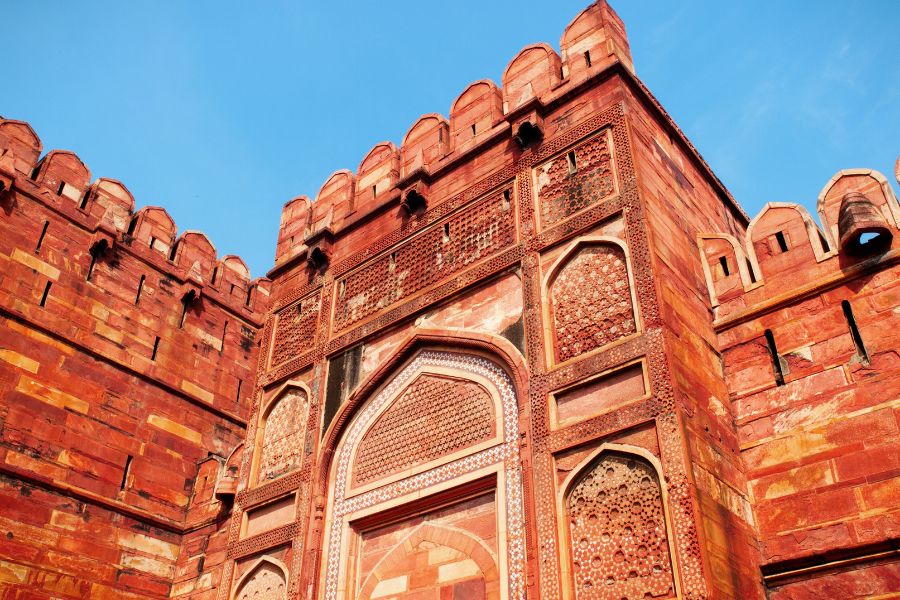
Food and Drink
As you make your way through the entrance walk and past the ticketing area, you’ll come across a few small market vendors selling souvenirs, food and drink. Guides are also available to offer their services for a fee. The complex itself is comprised of numerous buildings and structures, including the renowned Delhi Gate. If you’ve already visited the India Gate in New Delhi, you’ll find it’s within walking distance from the National Museum, to the south of Old Delhi.
What to see
Within the complex, there is a museum called the Red Fort Archaeological Museum. The Mumtaz Mahal, a spacious and well-preserved pavilion located at the southern end of the complex, is home to this museum. Visitors can explore the various forts, houses, quarters, and gates before visiting the museum to learn more about the history and archaeology of the Red Fort.
The museum is housed in a building that was previously designated as a women’s quarters. Visitors can explore a collection of artifacts that provide a glimpse into the past, including photographs, antique clothing, ceramic bowls, cooking utensils, cups, and weaponry such as knives and guns. These items are carefully exhibited behind spacious glass display cases for easy viewing.
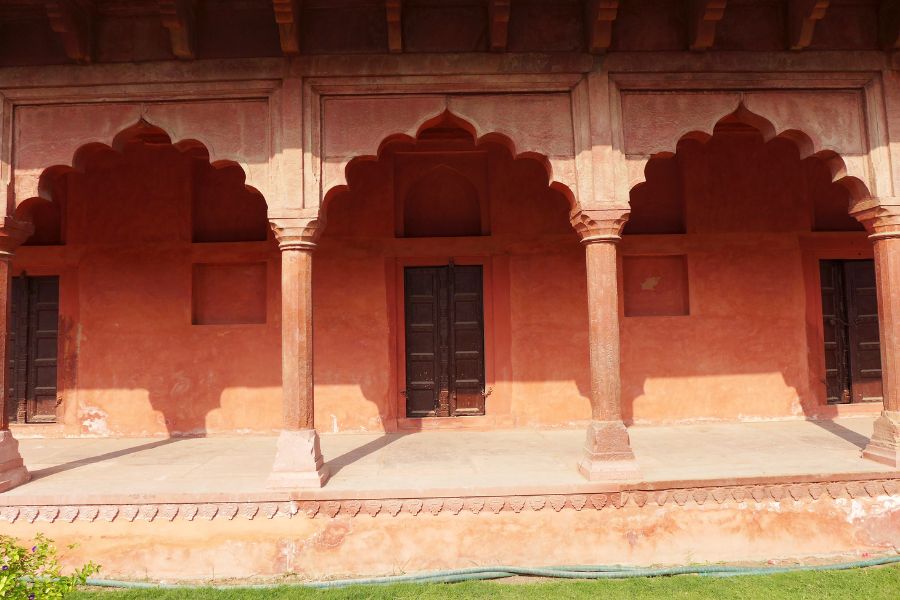
How to get there – Metro
The Red Fort complex in Delhi, India, is conveniently located near the Chandni Chowk Metro Station. Visitors can reach the complex by taking a short walk along Chandni Chowk road towards the fort. The fort’s large red walls at the end of the road serve as a clear landmark to guide visitors. Foreign tourists will be charged an entrance fee of 250 Indian Rupees to access the fort.
The complex offers an informative sound and light show every night that provides visitors with a deeper understanding of its history. Visitors should note that there is an additional fee of 25 rupees for bringing a camera and 5 rupees to enter the museum, although these fees may not always be enforced. It is also recommended to bring a hat, sunglasses, and water when exploring the complex during the day as the heat can be exhausting.
Chandni Chowk area
Visitors should also take time to explore the surrounding Chandni Chowk area, which is one of Delhi’s oldest and busiest markets. Here you can find everything from textiles and jewellery to street food and spices. Some popular food items include parathas stuffed with potatoes or paneer cheese, chaat (a savoury snack), and jalebi (a sweet dessert).
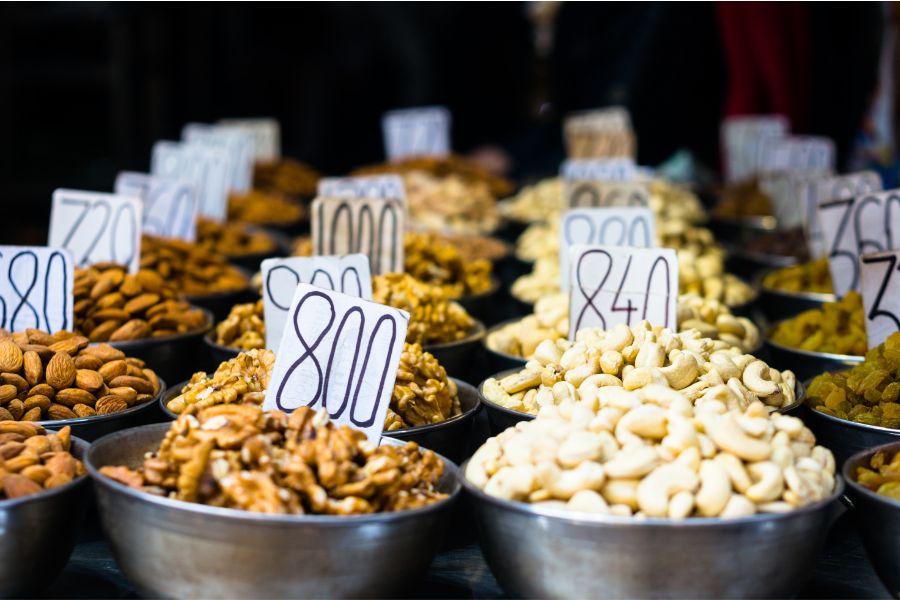
Final Thoughts
Visitors should also be mindful of the weather when planning their trip to the Red Fort. The best time to visit is between October and March when temperatures are cooler and more pleasant for exploring the complex. However, during this time, the fort can get crowded with tourists from all over the world.
If you’re interested in learning more about Indian history and culture, consider hiring a guide to take you through the Red Fort. These guides are knowledgeable about the complex’s architecture, history, and significance in Indian society.
In conclusion, visiting the Red Fort in Delhi is an unforgettable experience that offers insight into India’s fascinating past. From its historic buildings and structures to its informative museum and surrounding marketplaces, there is something for everyone at this iconic landmark. So grab your hat, sunglasses, camera and comfortable shoes- it’s time to explore!


